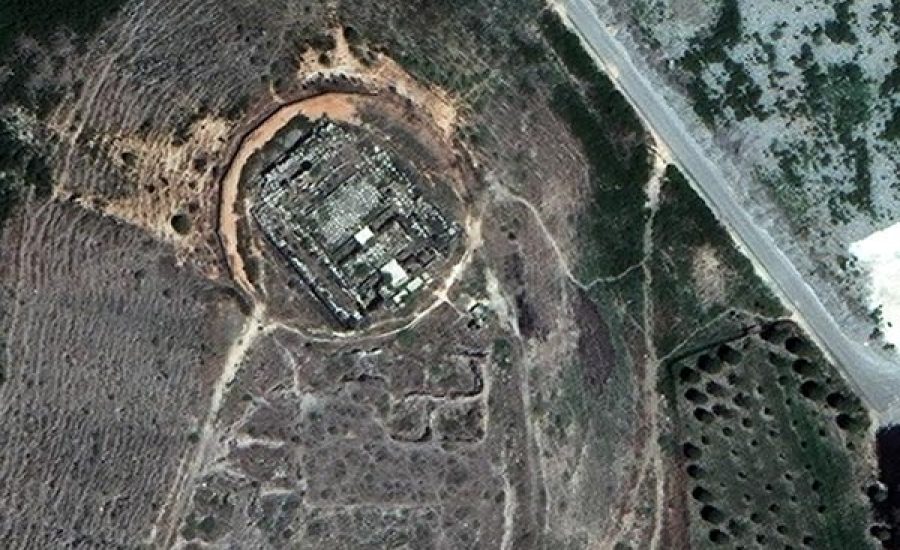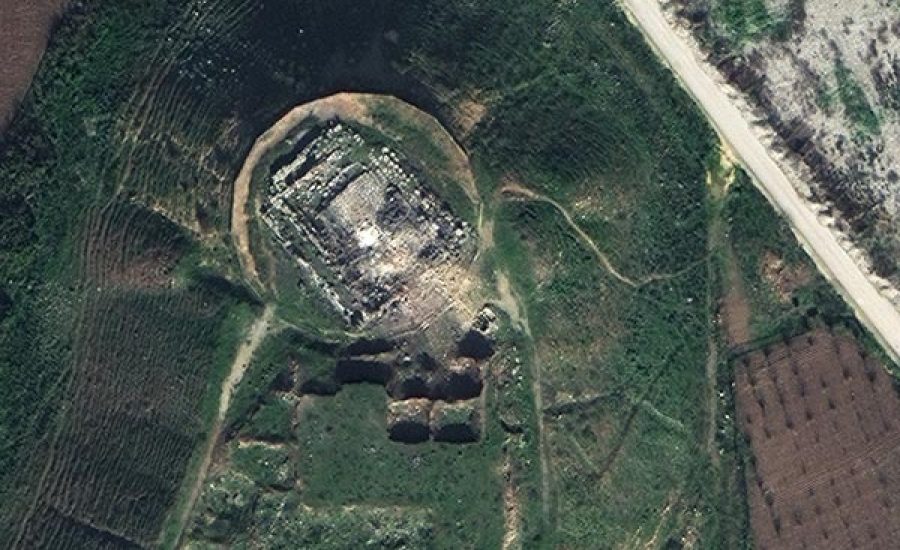Satellite Images of Afrin Identify Massive Damage to Ancient Temple
- European Space Imaging
Satellite imagery supplied by European Space Imaging shows that more than half of an ancient temple near the town of Afrin, Syria, has been reduced to rubble – reportedly by a Turkish airstrike.
The 30 cm resolution image of the temple at Ain Dara was captured by DigitalGlobe’s WorldView-3 satellite on January 29th, and the American Schools of Oriental Research Cultural Heritage Initiatives (ASOR) analyzed the data to confirm the extent of the damage. By comparing it with on-the-ground reports they were able to verify that an incident had taken place, and the exact parts of the temple that were damaged.


“Interestingly, we captured a 50 cm resolution image on the very same day, but the 30 cm picture shows the destruction much more clearly,” said Adrian Zevenbergen, Managing Director of European Space Imaging. “This highlights how critical that extra resolution is for gaining a proper understanding of what happened here.”
By comparing satellite imagery collected over recent weeks the ASOR invesigators were able to conclude that the incident most likely took place between January 20 and January 22.
The Ain Dara temple complex is more than 3,000 years old, and contains intricate stone sculptures of lions and sphinxes. It is famous for its striking resemblance to the Temple of Solomon, as described in the Bible’s book of Kings. The destruction of its artefacts represents a devastating loss of cultural history to Syria, and the world.
In a similar case, very high resolution satellite imagery was used to ascertain the timeline and extent of damage to Iraqi heritage sites by ISIS in 2015, at Hatra and Nimrud.
For more information about the events at Ain Dara visit ASOR or National Geographic.
Related Stories

GEOSeries: Extracting Insights From High Resolution SAR Imagery for Time-Sensitive Analysis
In this webinar, industry experts and advanced users of Umbra SAR data showcase how they transform SAR imagery into actionable insights in real-world mapping, monitoring and intelligence applications. See how NV5 and Umbra leverage ENVI SAR Essentials for advanced processing with time-efficient results, converting analytics into valuable intelligence.

Using Satellite Imagery to Build Water Resilience Across Europe
Water across Europe is facing severe pressure. Climate change, urbanisation, agricultural demands and other sources of pollution are threatening water security and creating critical challenges that need to be addressed. We have to act quickly, build stronger systems and create sustainable water resilience practices – so that both natural ecosystems and human communities can thrive. Here is how satellite imagery from EUSI can help.

EUSI and Albedo Partner to Deliver 10 cm Resolution Satellite Imagery to Europe
It is our pleasure to announce the partnership with Albedo, a builder of high-performance spacecraft and the first satellite designed to operate commercially in VLEO (Very Low Earth Orbit). This partnership will bring the world’s highest resolution satellite imagery to the European and North African market.

Updating the Land Parcel Identification Systems in 2025: The Benefits of Using Satellite Images
Agricultural paying agencies across Europe face increasing challenges in maintaining accurate and up-to-date Land Parcel Identification Systems (LPIS), ensuring compliance with the Common Agricultural Policy (CAP) and supporting sustainable agricultural practices.





